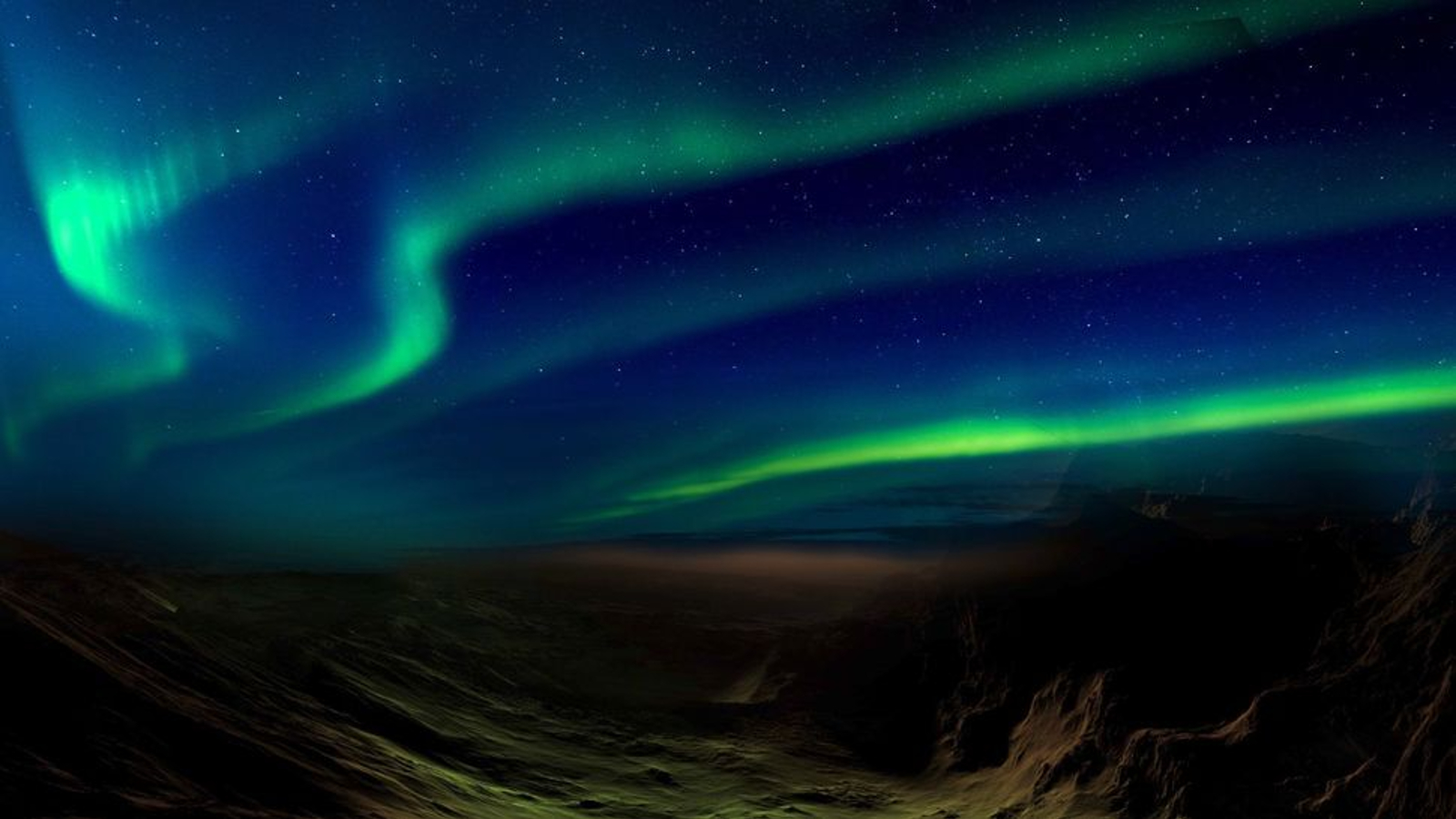
NASA’s Perseverance rover has captured the first-ever photo of “naked eye” auroras on Mars. The alien light show — snapped after the Red Planet was battered by a powerful solar storm last year — is not as visually stunning as Earthly auroras, but it’s arguably even more impressive.
The wandering robot snapped the newly released image on March 18, 2024, roughly three days after a sizable cloud of charged particles, known as a coronal mass ejection (CME), erupted from the sun. In a new study, published May 14 in the journal Science Advances, researchers revealed that the CME collided with Mars’ patchy magnetic field, exciting the gas within the planet’s wispy atmosphere to emit light, similar to how the most vibrant northern lights displays are created on Earth.
Mars was previously known to have several types of auroras, some of which have extended around the entire planet. However, until now, they have been emitted only in invisible wavelengths of the electromagnetic spectrum, predominantly in ultraviolet light.
In addition to being the first visible auroras on Mars, the faint green lights are believed to be the first auroras anywhere in the solar system to be captured using only visible wavelengths of light.
The new findings raise hopes that human eyes will one day witness auroras on another world firsthand. Under the right circumstances, Martian auroras “will be visible to future astronauts,” the researchers wrote.
Related: 32 stunning photos of auroras seen from space
The new photo was not captured by chance. Instead, researchers realized that the CME would likely hit Mars, so they positioned Perseverance’s Mastcam-Z camera toward the Martian night sky in anticipation of catching a glimpse. However, even then, they were not confident they would see a visible aurora.
This also marks the first time a Martian aurora has been detected from the planet’s surface. Until now, all observations have been captured by orbiting spacecraft, such as NASA’s Mars Atmosphere and Volatile Evolution (MAVEN) probe and the UAE’s Emirates Mars Mission orbiter.
Lights on Mars
Visible auroras were long assumed to be impossible on Mars because its atmosphere is extremely diffuse; the planet lacks a proper planet-wide magnetic field, which has allowed the solar wind and past solar storms to strip away most of Mars’ air. However, the new image proves that there is still enough gas to emit the colorful lights.
Analysis of the auroras’ green hues revealed that the light was emitted by excited oxygen molecules, which make up around 0.13% of Mars’ limited atmosphere, according to Live Science’s sister site Space.com. The low concentration of the gas, combined with high levels of dust in the air, is why the light from the auroras is barely visible in the photo.
The auroras were so weak that the light was apparent only after the glare from Mars’ largest moon, Phobos, was edited out of the photo, which is why the image above is split in half.
It is unlikely that humans could have seen such weak auroras. However, the researchers think a higher dose of solar particles, coupled with reduced atmospheric dust, could allow the phenomenon to be visible to the naked eye in the future.
At night, another type of green, aurora-like light — known as airglow — can occur near the planet’s poles and may be visible to future astronauts. This phenomenon occurs when oxygen molecules ionized by the sun cool down and recombine, releasing excess energy in the process. However, the newly observed auroras emitted a wavelength separate from any observed Martian airglow, which strongly hints that they are a new phenomenon.
Every other solar system world with an atmosphere — Venus, Jupiter, Saturn, Uranus and Neptune — is home to some sort of extraterrestrial aurora. However, as with Mars, these alien light shows occur in non-visible parts of the electromagnetic spectrum, including ultraviolet, infrared and X-ray light.
For distant worlds beyond the orbit of Mars, these auroras are triggered mainly by a constant stream of charged solar particles, known as the solar wind. However, some planets, such as Jupiter, can also experience extremely powerful auroras due to other phenomena, including magnetic anomalies triggered by these worlds’ giant moons, recent research has revealed.
For planets closer to the sun — like Venus, Earth and Mars — more violent space weather events, such as CMEs, can also trigger auroras. Despite having virtually no atmosphere, Mercury has also been known to experience aurora-like X-ray emissions near its surface when the sun’s closest neighbor is frequently hit by solar storms.
Large-scale solar outbursts have become more common in recent years as the sun has reached the peak of its roughly 11-year cycle of activity, known as solar maximum, when solar storms become more frequent and more intense. At various points, scientists have used Mars rovers to spy on the sun’s far side, to predict when hidden CMEs may impact Earth.


